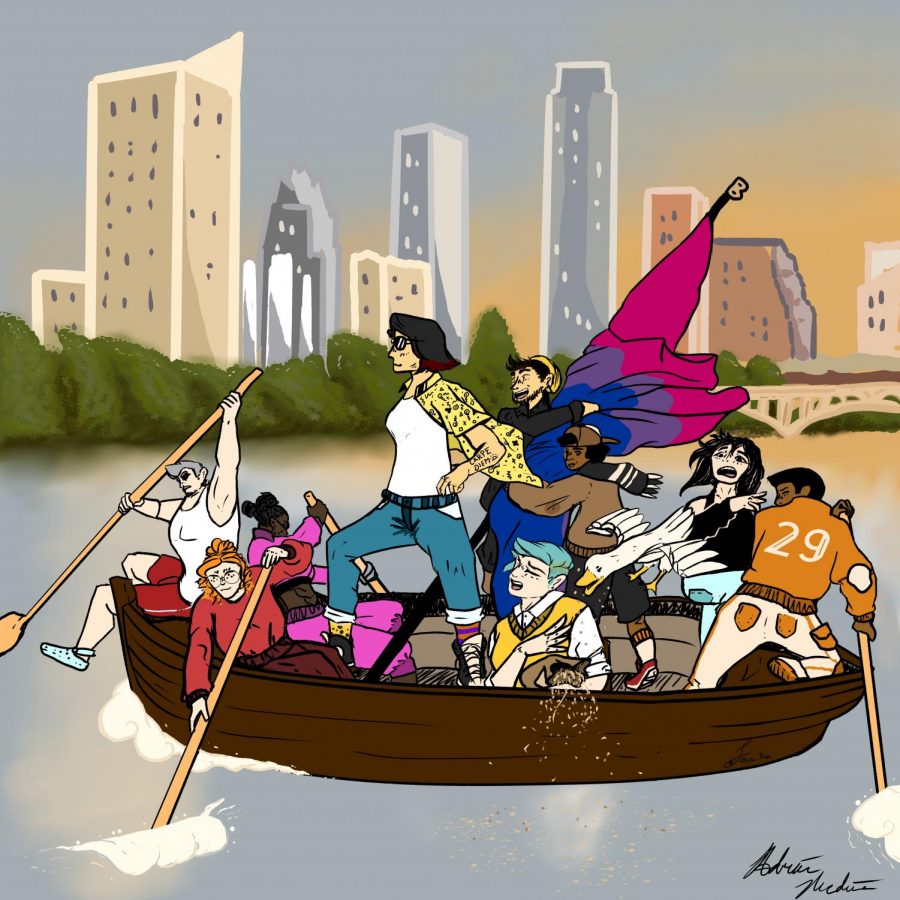UT students celebrate community and acceptance during Bisexual+ Awareness Week
October 6, 2021
Editor’s Note: This article first appeared as part of the September 24 flipbook.
Growing up in Frisco, Texas, Aiden Morales said he didn’t know any other LGBTQ+ people with whom he could discuss his identity. After his first partner confided in him, Morales learned his openness with his bisexuality helped others come to terms with their sexuality and gender.
“A lot of people came to me and talked to me about (coming out), because I’ve had my share of (challenging) family experiences,” social work junior Morales said.
While some UT students may have bisexual friends brave enough to celebrate their identities year-round, others may only be reminded by social media posts during Bisexual+ Awareness Week, celebrated Sept. 16-23. For bisexual Longhorns, awareness and acceptance of their identities is essential to ensuring better emotional and physical health outcomes.
“(Bisexual visibility) can’t be a trend for just this year, or next — it has to be an ongoing thing,” Morales said. “Young people need to know about this big identity in (the LGBTQ+) population. If you don’t have education, misconceptions align, and that turns into ignorance, hatred and homophobia.”
Many students who utilize the Gender and Sexuality Center fall under the “bi+ umbrella,” which includes those who identify as pansexual, polysexual, plurisexual, fluid and more. Center director Liz Elsen said she noticed some of their bisexual students feel nervous about belonging in the community.
“There are often people undermining folks’ own experience, talking about being bi, pan or fluid, and encouraging them to ‘pick a side’ or ‘make up their mind,’ which is really harmful to folks in the bi+ community,” Elsen said. “That can feel really exhausting (and) can take a huge toll on bi+ students’ mental health.”
Social work senior Kate Moore said she finds herself automatically code switching between facets of her attraction to different genders depending on social context.
“I’m using certain parts of myself, whatever community I’m in,” Moore said. “I don’t feel like a part of a bisexual community — if there’s one out there, I’m not aware of it. I haven’t really found a group of people to express all of it at once and connect with on that level. I can talk about attraction to a woman with my friend who’s lesbian (and) attraction to men (with my friend who’s gay), but it’s different. ”
History freshman Matilda Herrera Ramirez said she questioned her label for a while before choosing “bisexual” in middle school. After sharing her excitement with her peers, she told her mom she was interested in girls and boys.
“Saying you’re bi is polarizing, even within the LGBTQ+ community,” Herrera Ramirez said. “It’s hard to find solidarity from (gay or straight people) because you’re kind of in between.”
Herrera Ramirez said her mother made her feel accepted by sharing that she dated women in college and was not always sure she would end up with a man.
“Having someone in your private life who is in the community is so meaningful,” Herrera Ramirez said. “You have someone in your corner who understands.”
Elsen echoed the importance of affirming bi+ people when they share their identity, and trust they know themselves better than anyone else.
Students interested in getting involved with the revitalization of the Austin Bi Collective at UT can reach out to the Gender and Sexuality Center, open from 9 a.m. to 5 p.m. Monday through Friday for virtual appointments. Bi+ people and those questioning can find more information from the Bisexual Resource Center.
“Our bi, pan and fluid students are cherished in our space, and respected,” Elsen said. “Folks who are under the bi+ umbrella are a valid part of the (LGBTQIA+) acronym, and of our community.”



